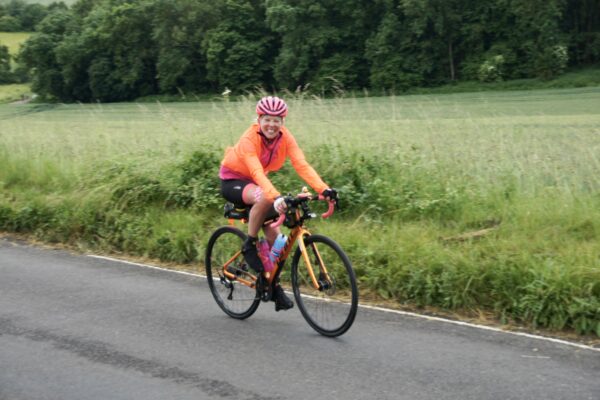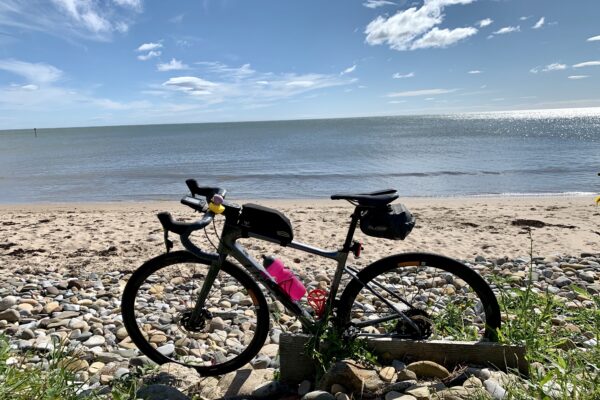With all this cold weather that we have been having recently and a few training sessions done with my yaktraks on I thought I would share with you an article I wrote about my experience in the Arctic – needless to say its much colder than anything we will experience here, but if you are prepared for the cold, dress correctly and know what to do if something happens then it will be an amazing experience.
RACING IN THE ARCTIC
Imagine yourself surrounded by white glistening snow, stunning scenery and temperatures in the region of minus 40 degrees; attach a harness and a sled to your waist with all your kit inside, make sure every part of your body is covered to protect you from frostbite, now you are ready to race!
Even though there are quite a few winter races to choose from, I decided to enter the 6633 Extreme Arctic Ultra; a 567km non-stop race over 8 days in the Arctic. The race starts at Eagle Plane in the Yukon and finishes in Tuktoyaktuk on the Arctic Ocean; This was something new and would take me completely and utterly out of my comfort zone.
The race start was delayed due to the high winds and snow, but eventually 12 apprehensive but excited competitors set off on their 567km journey to the Arctic Ocean.
The checkpoints (CPs) ranged in distance between 42 and 113km apart. CP 1 was on the Arctic Circle at 42km; the crew apparently had a bet on as to which competitor would get there first. I later discovered that my son, who was part of the crew, didn’t even have my name on his list. Imagine his shock when his mother came through first!
The temperature at this stage was about minus 35 degrees with strong winds that were only going to get worse as I headed north towards “Hurricane Alley” on the boarders of the North West Territories. The wind was so strong I leant into it; struggling to stay upright. With the temperature plummeting and add in the wind chill factor falling to a FREEZING minus 70, my facemask had frozen solid so taking it on and off to eat/drink was excruciatingly painful.
Heading northwards the trees became smaller, nights were filled with beautiful displays from the Aurora Borealis dancing around me in spectacular colours, I passed boats frozen into the water, had wow moments like I have never experienced before and always in the back of my mind hoping not to encounter any wolverines.
At 205 miles (330km) tiredness hit me like a bolt and I fell asleep for half an hour standing on my feet, the only thing preventing me from falling over was the harness attached to my sled. Then came the hallucinations. Hundreds of men dressed in white chemical suits with black gas masks on and carrying guns were either side of me on ski-doos, people were walking around in front of me, chatting and getting in and out of cars, cartoons characters stretched out in front of me only to pop up as I got closer, then I saw an elephant!
With 193km to go I set off on the Ice Road otherwise known as the Mackenzie River, I loved this section except for the fact that you could hear the river cracking underneath you, which was a bit disconcerting, but I can say I’ve walked on water! On the final 25k, I could see the lights of Tuktoyaktuk in the distance, my pace quickened and to my delight saw a crew car which I thought would guide me to the finish, unfortunately I still had 10k to go.
Due to the increase in pace, the exertion had left me sweaty and this meant that I was unable to control my body temperature, which could have been extremely dangerous, but more clothes sorted this out, now I looked like the Michelin Man, but I didn’t care as long as I got to the finish line.
In the early hours I finally arrived in Tuktoyaktuk to be greeted by all the villagers flashing their lights, tooting horns and cheering me on as I crossed the finish line in just under 6 days; winning the race overall and coming in 24hrs before the next person. An adventure I wouldn’t have missed for the world.
 Winter racing is extremely exciting, but poses different challenges. Here are a few tips that might help if you’re thinking of taking part in a cold event.
Winter racing is extremely exciting, but poses different challenges. Here are a few tips that might help if you’re thinking of taking part in a cold event.
- Training, try tyre dragging, this works well for simulating pulling a sled and strengthens your legs.
- Make sure your clothing is layered making it easy to take kit on and off to prevent sweating.
- Battery operated equipment needs to have a separate battery pack which can go underneath your clothes to prevent freezing.
- Water is carried in an insulated camelbak, worn over your base layer and underneath your other cloths. Always blow the water back down the tube once you have finished drinking so the water doesn’t freeze.
- I wore trainers 1.5 sizes too big with two pairs of socks.
- Cover up every part of your body to try and prevent frostbite.
- When you bivi out en-route, point the sled in the direction you are travelling – trust me it all looks the same when you wake up!
- Most importantly know where everything is in your sled this will prevent you wasting time and getting potential hypothermia.
- Always have a plan; it’s easy to stay inside at a checkpoint for longer when it’s so cold outside.
Racing in the cold is an amazing adventure and definitely an experience not to be missed out on.








